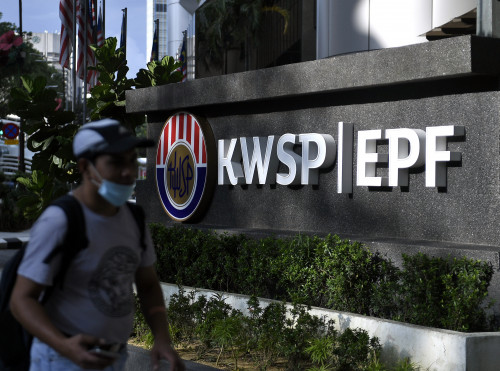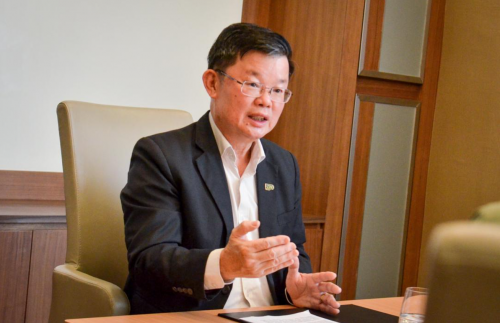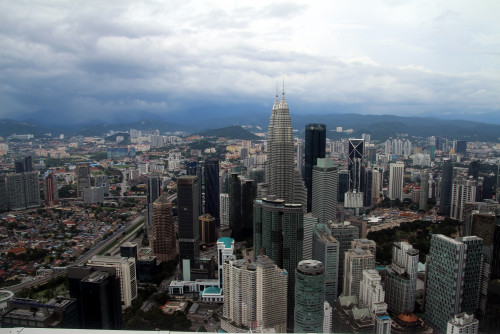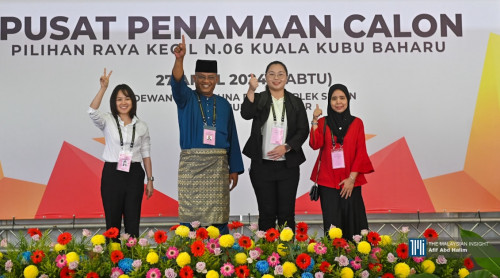KUALA LUMPUR – Petrol station manager Peter Wong’s electricity bill used to be around RM280 a month but he has been smiling since installing 10 solar panels in his house last year as he enjoys almost free electricity.
Wong, 37, started worrying about his rather steep power bills three years ago after the movement control order (MCO) was enforced.
“My house has three air-conditioning units and during the MCO, and also during the heat wave, we would keep them turned on for longer hours.
“As I couldn’t bear the higher electricity bills, I decided to invest in 10 solar panels with a capacity of 4.7 kWp (kilowatt peak), with eight facing east and two facing west on the roof of my double-storey terrace house in Georgetown (Penang),” he told Bernama.
The solar panel installation cost Wong over RM20,000 but after seeing the huge drop in his power bill, he was satisfied because it meant he could potentially save about RM280 per month on electricity and even have a negative balance if his household power usage comes to less than RM280 a month.
Wong is among those who benefitted from the government’s initiative to push for solar energy usage through the Net Energy Metering (NEM) programme which involves a 10-year contract with Tenaga Nasional Bhd (TNB) to feed excess electricity generated by solar panels into the power grid.
“Even when there is no one at home, the electricity from my solar panels goes into the power grid. TNB buys it and what we ‘sell’ is reflected in our power bill,” Wong said, adding that solar panels are not ideal if one’s monthly power bill falls under RM200.
He said once residential customers register for NEM with the Energy Commission, they can export any extra electricity generated to TNB, which would help offset their bills in the following months.
“Under this scheme, we become ‘prosumers’ – producing and consuming energy at the same time,” he added.
Renewable energy agenda
Solar technologies enable sunlight to be converted into electrical energy through solar photovoltaic (PV) panels.
The NEM programme, which allows excess PV-generated energy to be exported back to the grid on a “one-on-one” offset basis, has three categories namely NEM Rakyat for domestic users, NEM Gomen for government buildings and NEM Net Offset Virtual Aggregation (Nova) for industrial and agricultural usage.
To date, a total of 84.5130 megawatts (MW) out of the 150 MW solar energy quota under NEM Rakyat, 32.6740 MW out of 100 MW quota under NEM Gomen, and 535.0091 MW out of 800 MW quota under NEM Nova has been approved, according to the Sustainable Energy Development Authority Malaysia.
Meanwhile, local experts and industry players have recognised the significant potential of the government’s efforts to facilitate the widespread adoption of renewable energy (RE) in Malaysia, with particular emphasis on the solar sector, even though the government has agreed not to raise the electricity tariff for nearly 99% of domestic users following the streamlining of electricity tariff for the peninsula through the Imbalance Cost Pass-Through (ICPT) mechanism for the July 1 to December 31 period this year.
Under the implementation of the new ICPT mechanism, approximately 83,000 or 1% of electricity users in Peninsular Malaysia will be paying a higher tariff of at least RM187 more per month starting this month until December.
Natural Resources, Environment and Climate Change Minister Nik Nazmi Nik Ahmad, in a recent interview with CNBC at the Energy Asia 2023 conference here, highlighted solar energy as the most promising and viable source of RE.
Universiti Kebangsaan Malaysia’s Solar Energy Research Institute deputy director Norasikin Ahmad Ludin said among the available RE sources, solar energy has the greatest potential in Malaysia given that the country has at least four hours of sunlight daily which enables the generation of electricity using solar power throughout the country all year round.
“It can also potentially reduce electricity bills because consumers generate and consume their own electricity. But a 100% reduction is impossible unless the consumer has minimal usage. This is because the maximum installed capacity allowed for NEM domestic consumers is up to 72 kWp for three phases.
“Thus, the system should be able to bear at least one-third of the consumer’s electricity consumption,” she told Bernama in an email interview.
Norasikin said a solar panel grid system comprises an inverter, a mounting structure and an optional battery storage (not included) system which is connected to the TNB grid either through direct feed or feed-in-tariff, ensuring separate measurement and monitoring of power consumption and power generation.
“There is also the indirect feed, namely the self-consumption scheme, which utilises a bi-directional meter to track the import and export of electricity. In this scheme, all costs associated with the PV meter are to be borne by the consumer,” she said.
Reducing carbon emission
A Malaysian energy consultant based in London Evan Ng Chee Yang said beyond the financial savings that can be realised through the government’s initiatives such as the NEM programme, there is also a need to emphasise the environmental impacts that individuals can deliver to the wider society through the use of residential rooftop solar panels, a fact which is often overlooked.
He said greater penetration of rooftop PV from the relatively low rate in Malaysia currently can reduce the overall reliance on carbon-emitting thermal power generation.
“This will lower the grid emission intensity in Malaysia and send a market signal to investments looking into developing new thermal assets.
“This means that lesser land conversion will be required to deploy renewables, enabling these lands to be freed up for other economic and environmental activities, he said.
Ng said a higher rooftop solar PV capacity also means a smaller capacity of large-scale renewable power plants will be needed to achieve the national renewable energy capacity target.
Under the Malaysia Renewable Energy Roadmap, the government has set a target of RE providing 31% (13 gigawatts) of the nation’s energy needs by 2025 and 40% (18 gigawatts) by 2035. It has further committed to increasing RE capacity to 70% by 2050.
Malaysia currently has 2,165 MW of total installed solar capacity and aims to add an additional 1,098 MW by 2025 and another 2,414 MW by 2035, according to data from Berlin-based consulting firm Apricum.
Ng said the higher penetration of renewables at the grid edge, like the deployment of residential rooftop solar panels, also reduces the overall need for large-scale network reinforcements to transport renewable electricity from remote sites to end-users, enabling a resource and cost-effective transition towards a more sustainable energy future.
“It is important for the authorities to communicate these wider benefits to the environment and the overall power system that individuals can contribute to by adopting rooftop solar so that consumers can factor these externalities into their considerations,” he added.
Higher demand for solar panel installations
Industry players believe there is an increasing demand for solar panel installation in Malaysia – driven by consumer concerns over higher electricity bills, leading to a shift towards RE and a reduction in installation costs.
Progressture Solar co-founder and chief operating officer Ng Yew Weng said his company has seen an increase in domestic sales, with over 60 inquiries for home solar panel installations in a week following the government’s announcement of the new ICPT mechanism on June 23.
“Year-to-date we have secured 18 MWp (megawatt peak) of solar projects cutting across homes and commercial and industrial buildings,” he said, adding that a typical solar system for home use could cost anywhere from RM14,000 to RM46,000 depending on the type of house and roof size.
Malaysia Green Technology and Climate Change Corporation group (MGTC) chief executive officer Shamsul Bahar Mohd Nor said due to the high demand for solar energy products, which are also categorised as green products, companies dealing in such products are encouraged to obtain MGTC’s MyHijau certification.
“Registered green products and services will be listed in the MyHijau directory which is a reference for green procurement. The MyHijau mark is a guarantee to consumers that the products they are considering for purchase have a lower environmental impact in comparison to similar products available in the market. All products have to follow tough criteria before they receive the mark,” he told Bernama when met at the Energy Asia 2023 conference here recently.
He believes the high demand for solar panel installations will lower the current market prices, thereby easing the burden on consumers who intend to transition to RE.
Meanwhile, Norasikin said to encourage more consumers, especially domestic users, to transition to solar energy, the government should provide incentives such as grants or rebates for installing solar panels.
“Upfront grants or cash rebates for installing the first four kWp for residential units will be a good way to replace the (government’s electricity) subsidy,” she said, adding that providing low-interest or interest-free loans to individuals or organisations for the installation of solar panels should also be considered.
“The loan can be paid back through tax assessments to make it simpler for borrowers. The government can also provide tax incentives, which can be done by excluding the value of the distributed solar energy systems from the property tax assessments.” – Bernama, July 6, 2023



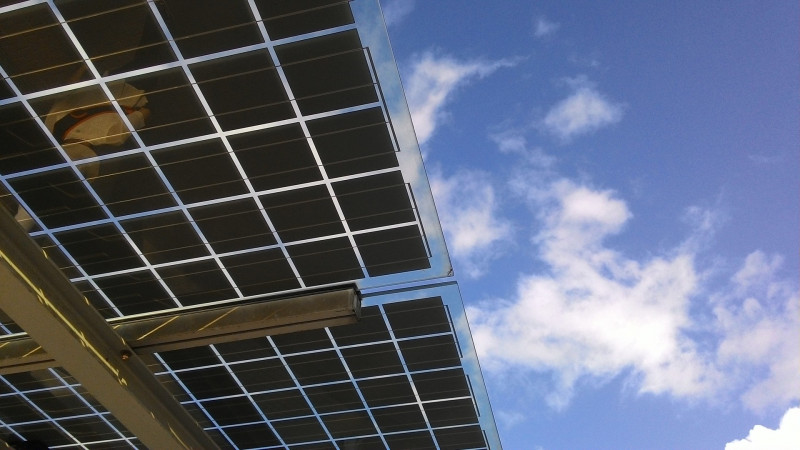


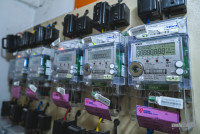

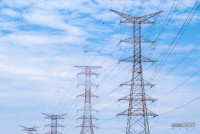




.jpg)



.jpg)


